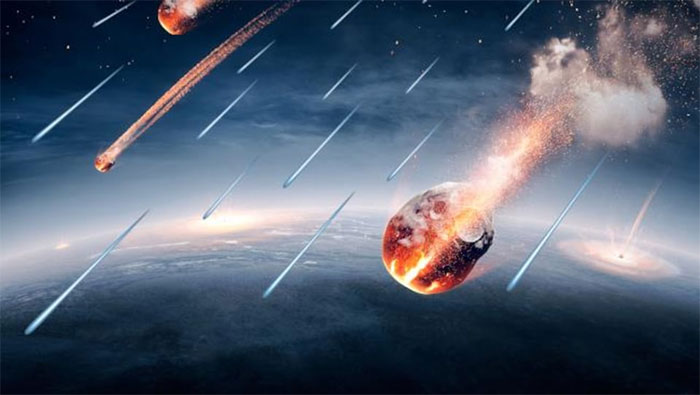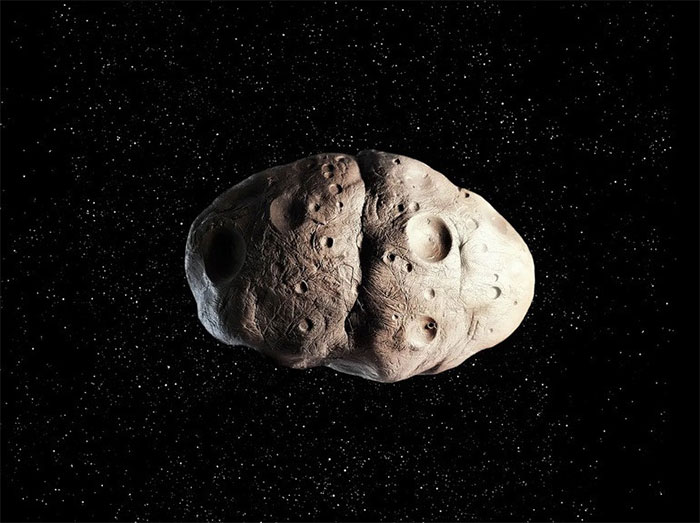Researchers Suggest Solar Wind Generates Water on Asteroids. When they collide with Earth, they provide a significant amount of water.
What is the origin of water on Earth? An international team of scientists has discovered that the Sun is actually one of the most capable sources of water that sustains life. A portion of this water is generated by solar wind and brought to Earth by colliding asteroids.

A portion of water is generated by solar wind.
Earth is one of the rocky planets in the Solar System. It is the only planet that contains a significant amount of water, covering about 72% of its surface, which is approximately 366 million square kilometers.
According to the latest estimates, the total volume of water on our planet is about 1.4 billion cubic kilometers. To grasp the enormity of this water, scientists have compared it to a cube with edges measuring 1,000 kilometers.
About 4.6 billion years ago, when Earth was formed, it was just a very hot planet continuously bombarded by gigantic meteoroids carrying water in vapor form.
When this meteor shower ended about 3.9 billion years ago, the Earth’s crust cooled, and water condensed into liquid form. Torrential rains flooded our planet.

Illustration of asteroids colliding with Earth carrying water.
Many scientists are confident that a portion of the water currently on Earth is the result of numerous collisions with asteroids. Additionally, research from Curtin University (Australia) shows that the amount of water currently on Earth cannot be solely attributed to this mechanism; solar wind is also a source of water on Earth.
Solar Wind (Plasma Wind) is a stream of very hot charged particles in the form of ions, primarily composed of hydrogen atoms. These particles continuously escape from the Sun and disperse into space.
Due to its extremely high temperature, the particles that make up solar wind have a high thermal velocity, allowing them to reach speeds of approximately 800 km/s, with a mass of up to 1 million tons per second. A significant portion of the solar wind is deflected by Earth’s protective magnetosphere.
Without this protection, life on Earth would be impossible. However, certain particles from the solar wind have managed to penetrate our atmosphere. These particles can be observed from Earth as aurora borealis.

Auroras generated by the interaction of charged particles from solar wind with the upper atmosphere of the planet (Image: Aurora Cabin).
On the other hand, solar wind is also the source of water generation on the surface of S-type planets, primarily composed of silicates that have impacted our Earth.
Itokawa Dust Particles

An asteroid Itokawa where the Hayabusa spacecraft landed and collected samples in 2005 (Image: Shutterstock).
On May 9, 2003, the Japan Aerospace Exploration Agency (JAXA) launched the Hayabusa spacecraft, which safely landed on the surface of asteroid Itokawa on November 19, 2005.
This spacecraft was equipped with a mini-robot designed to collect soil samples from this asteroid and return them to Earth. Since then, researchers have been able to analyze dust particles from Itokawa.
Using a scanning atomic probe and high-resolution three-dimensional microscopy to observe the spatial distribution of atoms, scientists have detected the presence of water within the dust from the soil of asteroid Itokawa.
This discovery marks a significant advancement in understanding the early period of our planet and how the water supply was formed on Earth. It also opens up a potential solution for transporting and storing water for future human space missions.
Moreover, for the researchers behind this discovery, it is highly likely that the processes occurring on Itokawa could also happen elsewhere, on celestial bodies without atmospheres like the Moon.
The ability to collect water from the dust of these space objects is a definite advantage for astronauts. Therefore, future spacecraft will not need to carry large amounts of water to meet the needs of individuals during extended journeys lasting several months or even years to the outer reaches of the Solar System.


















































